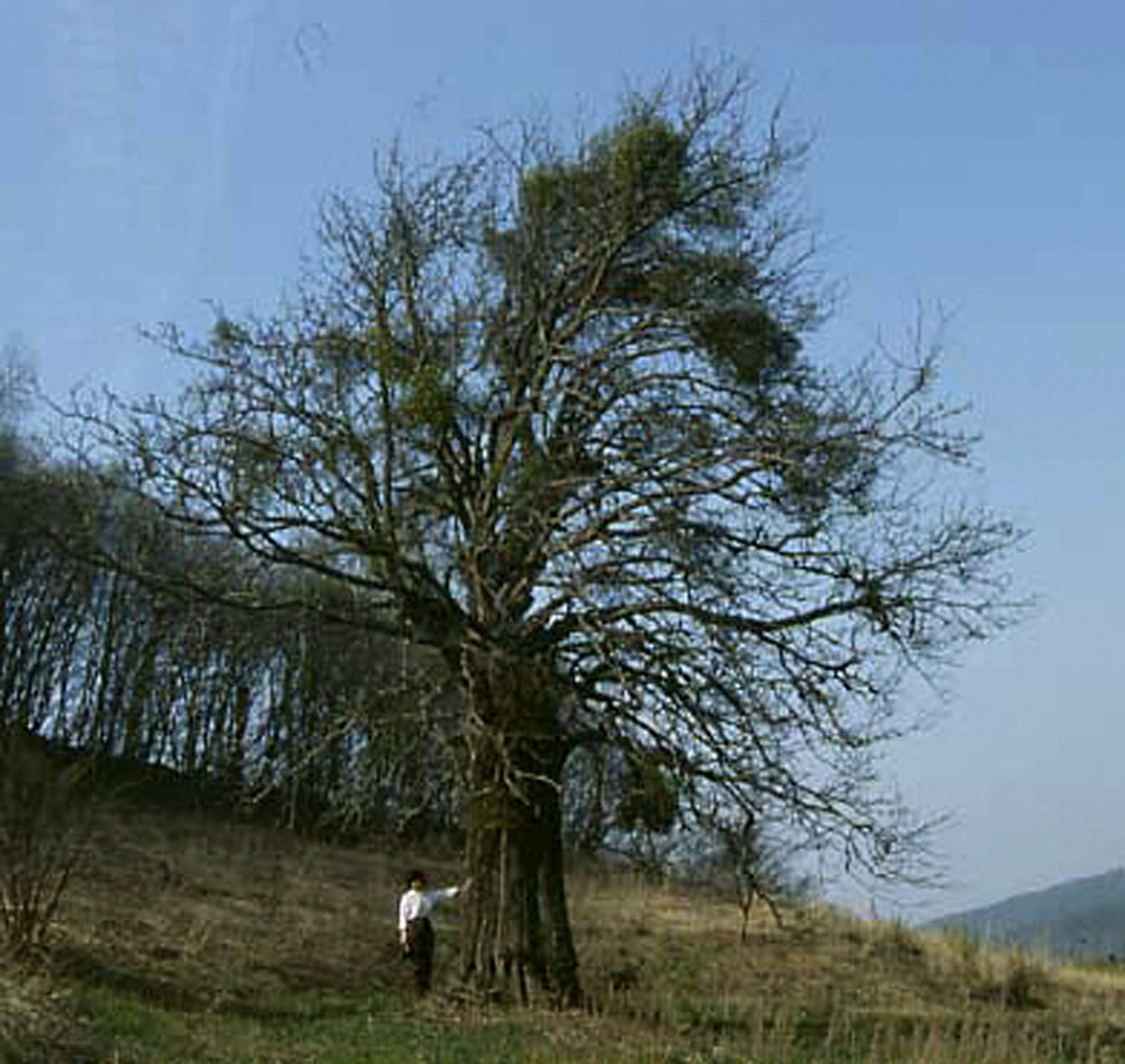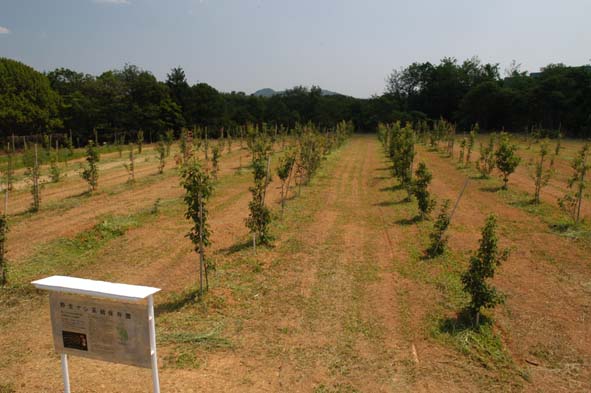Exploration and conservation of pear genetic resources
Iwateyamanashi (Pyrus ussuriensis Maxim. var. aromatica (Nakai & Kikuchi)
Rehd.) is one of the Pyrus species grown wild in Japan. The origin of the Japanese pear (P. pyrifolia) is uncertain but it has
been suggested that Iwateyamanashi is the possible progenitor of the modern
Japanese cultivar. During the last few
decades, the number of Iwateyamanashi trees has been decreasing and therefore,
conservation is urgently needed. After thirteen explorations in the northern Tohoku region of Japan, 615
pear trees and 22 local names were recognized mainly in Iwate Prefecture. The center of the distribution seemed to be somewhere around Mt.Hayachine
to the northern area of Kitakami highlands (from lat. 39 20f to 40 10f N, and from long. 141 20f to 141 50f E). Four morphological characters concerning
fruit shape, measured for 85 trees, showed a wide range of continuous
variation. For the skin colour of fruit
51% of trees bore russet type fruits, 22% smooth and 27% intermediate
ones. Most of the fruits had five loculi
but Sanenashi fruits (seedless pear), one of the old cultivars, had three, and
fruits of another two trees had four.
More than 80% of trees tended to produce fruits with a calyx but some
trees bore fruits without a calyx. These observations indicate a wide range of genetic diversity in Pyrus
species which is caused, not only by high heterogeneity in Iwateyamanashi
itself, but also by the coexistence of Iwateyamanashi, P. pyrifolia and hybrid progeny in this area. Already 250 trees have been conserved as genetic resources by grafting
at Food Resources Research and Education Center, KobeUniversity

Diversity of pear fruits collected from Iwate, Aomori, and Akita, Japan.
Bigger three fruits in right side are Japanese modern cultivars (Uppre:
Kousui, Middle: Housui, Lower: Nijisseiki)

@iNatural treasure pear tree, Kunohe-mura, Iwatej
Acknowledgements
Thanks are due to all of the people who allowed us to investigate their trees, who gave us important information about pear trees, especially Mr. T. Miura in Tono-shi and Mr. E. Nishiyama in Kunohe-mura. This work was supported by a General Research Grant from the Nippon Life Insurance Foundation and Iwate Sanriku Foundation..

Typical fruits of Iwateyamanashi
iGenetic Resources and Crop Evolution, in press)
Reevaluation and utilization of wild pear genetic resources (Iwateyamanashi)
as breeding materials
Many trees in Tohoku bore small fruits which were so hard, sour or astringent
that they were not suitable to eat as fresh fruits. People utilized such fruits after reducing
the acidity and astringency by means of long term preservation in a eKamasugof
(straw bag), boiling in the water or treating with brine. Pear liquor prepared by soaking pear fruits
in shochu liquor has been used as a cough medicine. Exceptionally a few trees, including Sanenashi (seedless pear) produced
juicy, sweet or scented fruits suitable to eat as fresh fruits.
The timber of the pear tree is so hard that it is suitable for house
construction e.g. as an entrance step or a frame of a hearth. In Tono-shi, many pear trees were cut down in
order to produce hair combs until the end of the Second World War.
One of the characteristics of Iwateyamanashi is an aroma, which is the
origin of the Latin name of P. ussuriensis var. aromtatica. Different aromas were recognized such as
apple-like, European pear-like, or sweet aroma.
European pear fruits have a good fragrance, but the fruits of almost all
modern Japanese cultivars have no aroma so that some trees found by this
investigation can be used as breeding materials to introduce good aroma
to Japanese cultivars.
(Other Research interests)
Origin of Japanese pear and iwateyamanashi using molecular markers (SSR, chloroplast DNA)
Chemical feature of fruits flavours in Iwateyamanashi
Molecular analysis of flavours related genes from pear
@
 i
i
600 pear trees collected from Tohoku region. (Food Resources Research and
Education center, Kobe University)